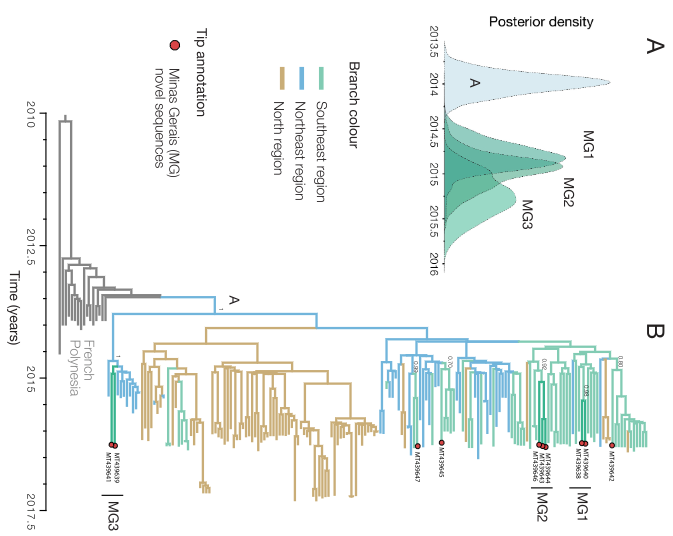Infect Genet Evol, 2021.
Authors: Iani FCM, Giovanetti M, Fonseca V, Souza WM, Adelino TER, Xavier J, Jesus JG, Pereira MA, Silva MVF, Costa AVB, Silva EC, Mendes MCO, Filippis AMB, Albuquerque CFC, Abreu AL, Oliveira MAA, Alcantara LCJ, Faria NR..
Journal: Infect Genet Evol,S1567-1348(21)00082-4: (2021)
Abstract
Autochthonous Zika virus (ZIKV) transmission in Brazil was first identified in April 2015 in Brazil, with the first ZIKV-associated microcephaly cases detected in October 2015. Despite efforts on understanding ZIKV transmission in Brazil, little is known about the virus epidemiology and genetic diversity in Minas Gerais (MG), the second most populous state in the country. We report molecular and genomic findings from the main public health laboratory in MG. Until January 2020, 26,817 ZIKV suspected infections and 86 congenital syndrome cases were reported in MG state. We tested 8552 ZIKV and microcephaly suspected cases. Ten genomes were generated on-site directly from clinical samples. A total of 1723 confirmed cases were detected in Minas Gerais, with two main epidemic waves; the first and larger epidemic wave peaked in March 2016, with the second smaller wave that peaked in March 2017. Dated molecular clock analysis revealed that multiple introductions occurred in Minas Gerais between 2014 and 2015, suggesting that the virus was circulating unnoticed for at least 16?months before the first confirmed laboratory case that we retrospectively identified in December 2015. Our findings highlight the importance of continued genomic surveillance strategies combined with traditional epidemiology to assist public health laboratories in monitoring and understanding the diversity of circulating arboviruses, which might help attenuate the public health impact of infectious diseases.

